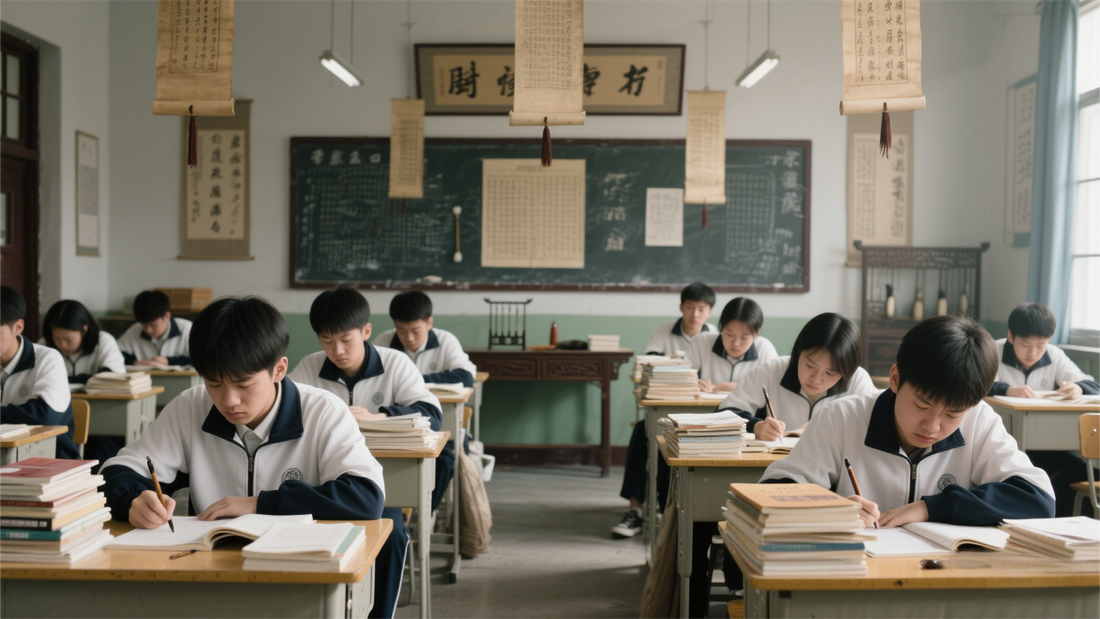
Why Do Chinese Students Study So Hard?
Share
Introduction
If you’ve ever wondered why Chinese students seem to study so hard or face immense academic pressure, you’re not alone. Compared to students in many other countries, Chinese kids often appear to be in a relentless race to excel. But why is this the case? In this article, we’ll dive into the cultural, historical, and social factors behind this phenomenon and explore whether this intense pressure is truly necessary.
A Cultural Tradition of Hard Work
In China, studying hard is more than just a habit—it’s a deeply ingrained cultural value. For centuries, education has been seen as the key to social mobility. I used to be a Chinese student myself, and while we didn’t always question the grind, it’s true that the pressure can feel overwhelming. Yet, this work ethic is also a point of pride. The Chinese have a saying: “No pain, no gain.” To master a skill or gain knowledge, effort is non-negotiable.
However, the intensity of today’s academic pressure raises questions. Is it really necessary for kids to endure such stress? This debate isn’t just happening among curious foreigners—Chinese parents and policymakers are grappling with it too.
The Historical Roots: The Imperial Exam System
To understand why Chinese students study so hard, we need to look at history. In ancient China, the keju (imperial examination system) allowed ordinary people to change their fate through rigorous exams. Passing these tests meant securing a government position, elevating not just your status but your entire family’s. This created a cultural belief that’s still alive today: “All pursuits are lesser; only studying reigns supreme.”
This reverence for education is reflected in the term “scholar” (dushuren), which historically referred to someone who studied Confucian classics to prepare for exams. For centuries, studying was the ultimate path to success, and this mindset has carried over into modern China.
The Modern Context: The Gaokao and Path Dependency
Fast forward to today, the gaokao (China’s college entrance exam) is the modern equivalent of the imperial exams. For many families, it’s seen as the only way to secure a better future. My parents’ generation benefited greatly from education during a time when opportunities were scarce. They escaped rural poverty through university degrees, and my peers followed suit. This success has created what we call “path dependency”—a tendency to stick to a proven route, believing it will work for the next generation too.
But times have changed. The economic benefits of a degree aren’t as guaranteed anymore. News reports highlight that even graduates from top universities struggle to find jobs. Yet, many parents and students cling to the belief that higher education is the only path forward, leading some to pursue advanced degrees that may not align with market needs.
The Double Burden: Pressure and Policy Changes
Chinese students face a double burden: intense societal expectations and a highly competitive education system. Parents, influenced by centuries of tradition, often push their kids to excel academically, believing it’s the safest route to success. Meanwhile, the system itself is under scrutiny.
In recent years, China has introduced reforms to ease the pressure. For example, the “Double Reduction” policy, launched a few years ago, banned after-school tutoring on weekdays to reduce the academic burden. This had a massive impact—major tutoring companies like New Oriental had to pivot entirely, with some teachers transitioning to live-streaming e-commerce. While businesses adapted quickly, societal attitudes are slower to change. Many parents remain skeptical, rooted in the belief that studying is the only reliable path.
A Shift Toward Balance
China’s education policies are evolving to align more with global models, like Germany’s, where students are streamed into academic or vocational tracks after middle school. The goal is to nurture both high-tech innovators and skilled workers. This shift aims to give students more freedom and creativity, moving away from the “one-size-fits-all” approach of the gaokao.
However, this transition will take time—possibly decades. Parents, still influenced by path dependency, are hesitant to embrace these changes. Even I find myself questioning whether it’s safe to let go of the old ways entirely. It’s a cautious, step-by-step process, much like China’s economic reforms in the 1980s under Deng Xiaoping.
The Future: More Freedom, Same Resilience
Despite the challenges, I’m optimistic about the future. Chinese students will likely enjoy more flexibility and diverse career paths. The phrase “a thousand troops crossing a single-plank bridge” describes the current gaokao frenzy, but I believe this will fade. Every individual has unique talents, and the future will offer more opportunities to shine in different fields.
At the same time, the Chinese qualities of diligence and perseverance will remain. These traits, combined with a more balanced education system, will empower the next generation to thrive in a rapidly changing world.
Conclusion
The intense academic pressure on Chinese students stems from a mix of historical reverence for education, cultural values, and modern competition. While reforms are underway to create a more balanced system, change is gradual. Understanding this dynamic offers a window into Chinese society and its evolving priorities.
Want to learn more about Chinese culture and language? Join my newsletter for weekly Chinese idioms and audio, or check out my small-group classes here to dive deeper into topics like this!
